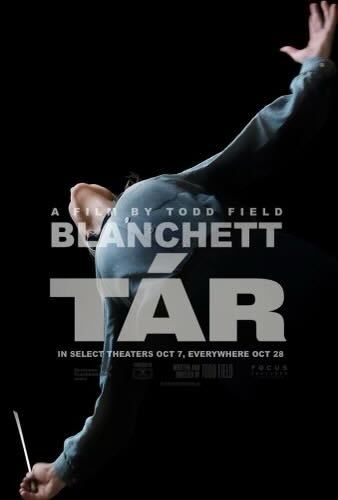Cate Blanchett gives complex, stunning performance in ‘Tár’
November 7, 2022
Content Warning: both this article and film contain discussion of suicide and sexual misconduct
Cate Blanchett takes the stage as celebrated composer Lydia Tár in Todd Field’s brilliant slow-burn drama, “Tár,” which made its wide theatrical release Oct. 28. The film explores the psychological decline of Tár at the height of her career; she finds herself falling from grace when her history of inappropriate relationships with students and subordinates comes to light. This unethical, exploitative behavior unfolds throughout the movie, showcasing how her toxic, manipulative behavior impacts her students and leads to the suicide of a young protege.
Blanchett stuns in the role of the maestro, showcasing a chilling, enigmatic main character who spirals before the audience. With a high chin and subtle smile, Blanchett brings a confident composure to the character that slowly disintegrates — a descent Blanchett delivers by progressively unwinding her uptight personality. The film paints a multifaceted portrait of Tár that Blanchett develops with ease. Moments shared with her daughter and partner showcase a softer, loving side of Tár, whereas moments with fellow musicians and love interests allow Blanchett to assume a more authoritarian, confident side of the character. Blanchett successfully plays into both personas, creating what feels like a nuanced, complete portrait of the maestro.
Field successfully fuses psychological horror and drama with this project, resulting in a sharp, genreless character study. From night terrors to flashing apparitions, the film initially portrays Tár’s guilt-ridden mental state through supernatural jumpscares akin to psychological horror. However, as the misconduct slowly comes into focus, her guilt and stress materialize in much more straightforward, human reactions, including a scene of her breaking down in her childhood home and later vomiting from stress. While this blurring of reality could be considered confusing, the incorporation of surrealism tasks the audience with deciphering reality and fantasy to piece together the main character’s past — a stunning directorial choice.
The film’s structure allows the audience to assess the protagonist-turned-villain alongside the characters in the movie. Accompanied by orchestral string arrangements and sharp dialogue, Field’s character study builds up a dynamic main character only to dissect how her psyche deteriorates in the wake of her own destruction.
4.5 haunted metronomes out of 5




